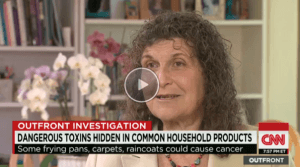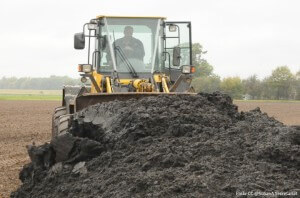August 2015: More Flame Retardants, Really?
In this edition:
- Do you watch TV by Candlelight?
- Prenatal DDT exposure linked to fourfold increase in breast cancer risk
- The Proof is in the Sewage: Can Harmful Chemicals Move from Sofas to the Environment and Our Bodies?

We are just back from FLUOROS 2015 and Healthy Buildings 2015 America in Colorado. In between these two informative meetings, I enjoyed several days of fun mountain hikes amidst luxuriant wildflowers.
Take-aways from the FLUOROS meeting include the tons of fluorinated chemicals polluting the deep Atlantic in a plume off South America (likely from their use to combat leaf cutter ants in Brazil); and also the uptake of fluorinated chemicals into lettuce, tomatoes, and strawberries, (probably from biosolids used as fertilizer and from reclaimed water used for irrigation). This recalls Planetary Boundaries and the worry that we are filling our oceans and our land with hazardous chemicals that will never go away.
Some good news is that several retailers are taking a leadership role in stopping the use of both fluorinated chemicals and flame retardants in the products they sell. Patagonia and I speak more about fluorinated chemicals in a recent CNN video.
At Healthy Buildings 2015 America, I encountered a flame retardant industry leader from the now-defunct front group, “Citizens for Fire Safety.” With regard to flame retardants we are once again facing an all too familiar challenge. In spite of the recent updates to California’s furniture standard so flame retardants are no longer needed, four new candle standards for electronic cases have been proposed as below. Even though a dozen such standards have been defeated and billions of pounds of harmful flame retardants prevented, overall flame retardant production is growing from their increased use in automobiles, electronics, and building insulation. We at the Institute continue to inform decision makers to prevent the unnecessary use of such harmful chemicals for a healthier world.
We hope you will have the opportunity to enjoy the beauties of the outdoor world this summer!
Arlene and the Green Science Policy team
Do you watch TV by Candlelight?

“While public health advocates are fighting to reduce the use of flame retardants in electronics, flame retardant manufacturers routinely recommend international standards that would increase use of the chemicals across all types of electronic products,” according to a recent article in the Guardian.
A few months ago, in March, 2015, the Institute and our network of collaborators succeeded in preventing a new candle standard that would have led to the use of harmful flame retardants in electronics cases worldwide.
However, four more candle standards for TVs are currently up for a vote due October 16, and once again we are sharing the most recent fire and health science research with committee members in more than forty voting countries. Given the variety of time zones, we have long days right now at the Institute!
Prenatal DDT exposure linked to fourfold increase in breast cancer risk

In a groundbreaking study, Barbara Cohn and colleagues from UC Berkeley analyzed stored blood samples collected from pregnant women decades ago when DDT was widely used. They found that women who were exposed to higher levels of this halogenated pesticide in utero “were nearly four times more likely to be diagnosed with breast cancer as adults than women who were exposed to lower levels.” This study suggests that the adverse health effects of halogenated chemicals are sometimes only observed long after exposure. This is yet another reason we should limit the use of such chemicals to applications that are truly necessary. Read more in our blog.
The Proof is in the Sewage: Can Harmful Chemicals Move from Sofas to the Environment and Our Bodies?

This week we debut the first of a new blog series highlighting the science behind our recent joint petition to the U.S. Consumer Product Safety Commission.
The petition asks for a ban on four kinds of consumer products that contain harmful halogenated flame retardants. Scientific statements from thirteen distinguished scientists were submitted in support of the petition. In the months to come, we will introduce each of these scientists and share some of their research.
This month, we feature Professor Rolf Halden, a public health expert at Arizona State University and John Hopkins School of Public Health, who studies the environmental impacts of industrial chemicals. In his statement, Professor Halden explains why halogenated flame retardants of similar structures exhibit similar chemical properties, implying that they should be regulated as a class, instead of one by one. Some of his other very interesting research is on Wastewater Treatment Plants as Chemical Observatories.
In case you might like to know what your sofa and sewage sludge have in common, his research found a very high level of halogenated flame retardants in already-treated sewage sludge. Read the blog to learn more about research showing how the chemicals in our couches can make their way to our water, land, and bodies.
Receive Updates By Email
Subscribe to our monthly newsletter and get these updates delivered right to your inbox!